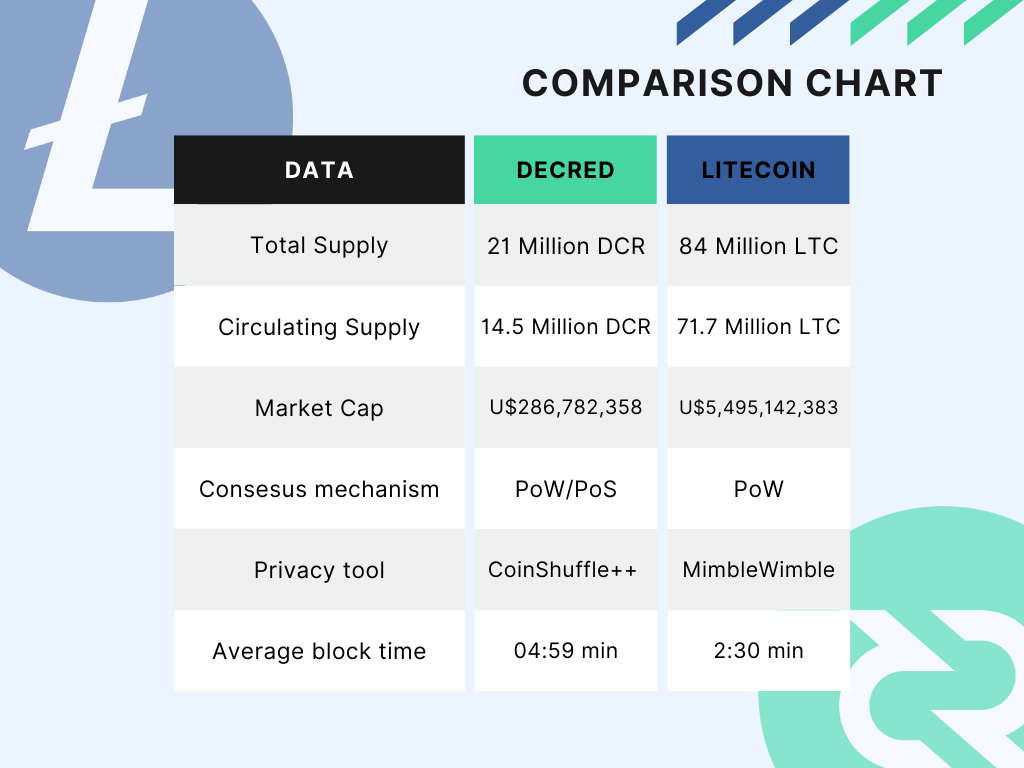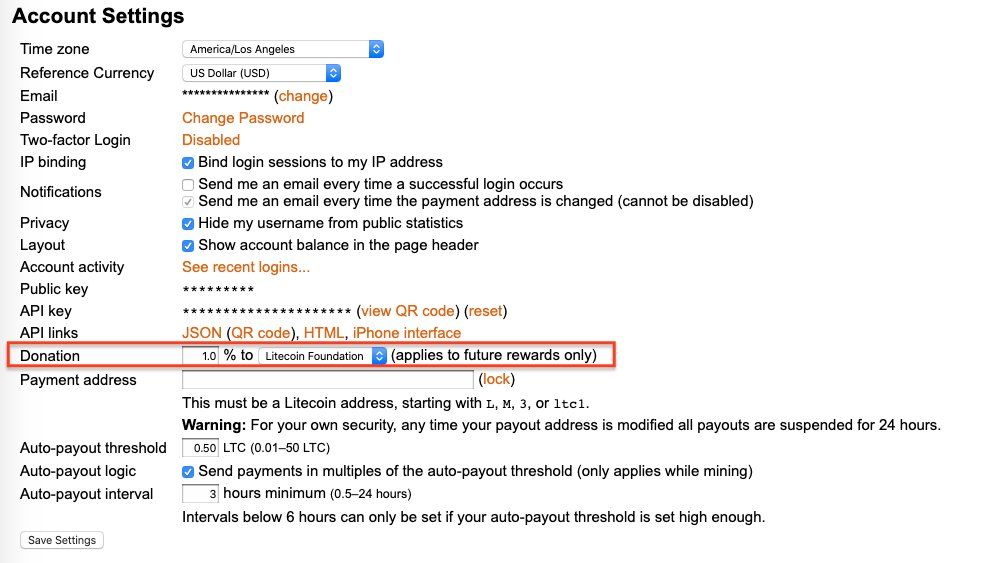The first-ever cross-blockchain atomic swap happened between Decred and Litecoin networks. Litecoin's design prioritizes transaction speed and low transaction fees.
Litecoin (LTC) is one of the most popular cryptocurrencies in the market since its launch in 2011. Created by Charlie "Satoshi Lite" Lee, an engineer who worked at Google and Coinbase. Litecoin was one of the first "altcoins" becoming one of the leading indicators of the crypto market.
The code behind this crypto is almost identical to the Bitcoin (BTC) code, being one of the first hard forks in the crypto world. They both use Proof-of-Work to verify transactions and have a fixed supply and halving system. The creation of Litecoin aimed to improve some Bitcoin aspects, just like Decred (DCR). In this article, we are going to compare Litecoin and Decred, observing at what points they converge and diverge and also in what ways they improve Bitcoin technology.

Operation
Litecoin's leading focus is to provide a financial network for people who want to overcome the traditional banking system. Charlie Lee wanted to create a more practical and fast cryptocurrency usable in everyday transactions. Just like Decred it runs on open-source software and is decentralized, not having a central authority or need for a middleman in transactions.
This crypto uses a Proof-of-Work consensus mechanism. Miners are responsible for tracking and validating transactions using computer power like in the Bitcoin network. Bitcoin has a first mover advantage when it comes to Proof-of-work only networks. Outside of Bitcoin, projects that don't include mitigation mechanisms (e.g. chain locks, ASIC algorithm enhancements) are generally more susceptible to 51% attacks. Centralisation can also be a concern in miner hash power. As a final note, miners tend to focus only on the financial interest, if the financial return is not advantageous miners may look for other options.
Decred on the other hand uses a hybrid Proof-of-Work & Proof-of-Stake consensus, not depending totally on energy consumption. With Proof-of-Stake technology, Decred can engage stakeholders just like a stock market corporation does. A Decred ticket holder can lock up tickets in a stake pool and receive rewards in the form of DCR. This mechanism offers more opportunities to integrate into a financial system than a Proof-of-Work one.
While Bitcoin and Decred have a maximum supply of 21 million coins, Litecoin is capped at 84 million coins. A Litecoin block is verified every 2.5 minutes, making the generation of LTC four times faster than BTC.
DCR coins are mined every five minutes and the mining reward is reduced every 21 days by less than 1%. Estimates show that by 2027 there will be 19 million DCR in circulation. The remaining 2 million DCRs will become available in the next one hundred years, addressing the creation of a low-inflation currency.

Funding
Litecoin foundation is responsible for directing LTC development and funding, having the leading goal described as "to advance Litecoin for the good of society, by developing and promoting state-of-the-art blockchain technologies". Despite the possibility of receiving donations, Litecoin has no active funding, being the foundation run by volunteers. Bitcoin has a similar policy, developers receive donations from wealthy Bitcoiners or companies. There have been complaints about underpaid work from skilled professionals.
The lack of funding leaves Litecoin struggling with its technical development front. In 2020 Charlie Lee suggested that 1% of the block rewards should go to the Litecoin Foundation, but the proposal got mixed reactions from the community. In the end, a setting to let miners donate any percent of their mined LTC to Litecoin Foundation got implemented at Litecoin Pool.

Directing 10% of all block rewards to the project treasury was Decred's solution for sustainability. The self-funding way adopted by Decred encourages debate and participation. All funds get directed through the Politeia platform, where stakeholders vote on proposals for different areas like development and marketing.
Transactions
Litecoin design prioritizes transaction speed. As said before, the average block verification is 2.5 minutes, a quarter of Bitcoin's, allowing much faster transactions. Litecoin also has low transaction fees, LTC users pay an average of U$0.04, while Bitcoin users pay a very high amount of U$7.6. With these perks, Litecoin has established itself as a strong option for digital payments.
Decred has a default transaction fee set at 0.0001 DCR/kB. If you transfer 1 DCR (U$19.35) using Decrediton, your fee will be 0,0000253 DCR (U$0,00049). Decred exchange DCRDEX has no arbitrary fees, leaving only users to profit from their transactions. One of DCRDEX best perks is that it uses atomic swaps to complete transactions, leaving users with full custody of their coins. Although built by Decred this service is freely available for Litecoin users to exchange LTC, DCR and BTC with more pairs come.
The first-ever cross-blockchain atomic swap happened between Decred and Litecoin networks. That was a decisive step in the direction of cross-chain trades without a third party. Atomic swaps are only possible if both blockchains have a similar structure, in this case, both Decred and Litecoin were built initially from the Bitcoin protocol.
Privacy
Litecoin adopted the MimbleWimble privacy upgrade on May 19th, 2022. This technology allows users to move their LTC into "Extension Blocks". These can be thought of as a parallel blockchain to the Litecoin one, although they exist within each Litecoin block. Transactions conducted with those blocks hide the addresses and amounts of the people involved, enabling more privacy.
The MimbleWimble technology got implemented since Litecoin has a very transparent blockchain. Decred also had suchlike debates around transparency and privacy. The mixing protocol CoinShuffle++ was the solution found!
Moving Foward
Decred and Litecoin are two projects that grew around Bitcoin's primary concept. Nowadays, Litecoin represents a fast and light tool for payments, while Decred is a community-centered coin, with highly developed adaptability. Which one looks more promising to you?






Comments ()